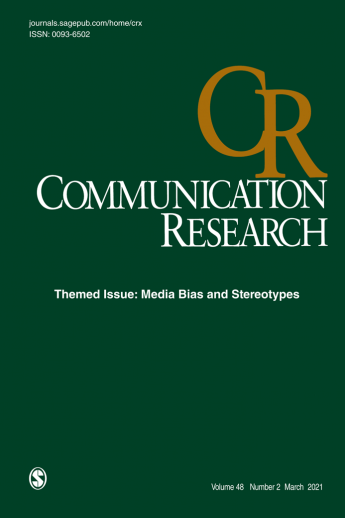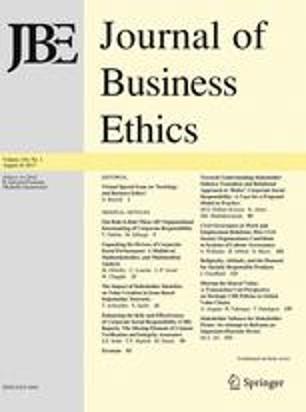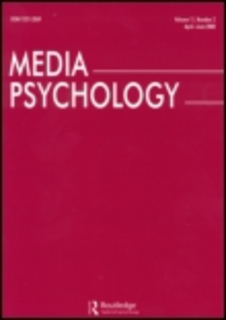Sun Young Lee

Associate Professor, Communication
Co-Director of Graduate Studies (Enrolled Students), Communication
Education
Ph.D., , University of North Carolina
Research Expertise
Crisis & Risk Communication
Public Relations
Strategic Communication
Sun Young Lee earned her doctorate in journalism and mass communication from the University of North Carolina, Chapel Hill in 2012. Her research interests include visual strategies in corporate social responsibility (CSR) messages, strategies to engage the public with CSR activities and the effects of CSR practices in a crisis context. Lee’s research has appeared in the Journal of Business Ethics, Communication Research, Public Relations Review and elsewhere. Her current projects focus on the role of emotions and of public empowerment in the co-creation of social value through CSR activities. Prior to arriving at Maryland, she was on the faculty at Texas Tech University.
Publications
How to strategically frame advocacy in a polarized landscape
Featured research from Associate Prof. Sun Young Lee & Ph.D. Alum Duli Shi
Author/Lead: Sun Young Lee"How to strategically frame advocacy in a polarized landscape" by Duli Shi, New Mexico State University, Feifei Chen, College of Charleston, and Sun Young Lee, University of Maryland, was featured on The Arthur W. Page Center for Integrity in Public Communication blog. Dr. Sun Young Lee is an Associate Professor in Communication and Dr. Duli Shi is a Ph.D. Alum of our program.
Their research seeks to answer the question of how businesses can engage meaningfully on sociopolitical issues while navigating an increasingly polarized landscape.
Read More about How to strategically frame advocacy in a polarized landscape
Publics’ Views of Corporate Social Advocacy Initiatives: Exploring Prior Issue Stance, Attitude Toward a Company, and News Credibility
Corporate social advocacy (CSA) has emerged to promote change on social issues in response to publics’ expectations and demands, but how different publics might respond to CSA differently is little understood.
Author/Lead: Sun Young LeeNon-ARHU Contributor(s): Sungwon Chung
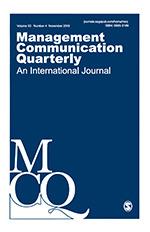
Corporate social advocacy (CSA) has emerged to promote change on social issues in response to publics’ expectations and demands, but how different publics might respond to CSA differently is little understood. Grounded in Du et al.’s (2010) corporate social responsibility (CSR) communication framework, social judgment theory (SJT), and the elaboration likelihood model (ELM), we conducted an online survey (N = 505) to examine whether publics perceived CSA differently depending on their existing stance on an issue and whether the existing stance interacted with their attitude toward the company and news credibility. The results showed that individuals’ reaction to the CSA differed in light of their existing stance on an issue. Furthermore, when an individual's stance was undecided, attitude toward the company and news credibility were significantly related to change in issue stance, attitude toward the CSA campaign, and skepticism toward the company’s motives. We discuss the theoretical and practical implications.
Creating shared value (CSV) and mutually beneficial relationships to address societal issues and develop corporate competitive advantage: A case study of Yuhan-Kimberly and an aging population
A case study on how a multinational company, Yuhan-Kimberly, a joint venture of Kimberly-Clark and Yuhan, developed and implemented its CSV program, and created win-win, mutually beneficial impacts, in response to an increasingly aging society in Korea.
Author/Lead: Sun Young LeeNon-ARHU Contributor(s): Jungkyu Rhys Lim

Through creating shared value (CSV) initiatives, companies have attempted to contribute to solving social problems that the public sector cannot address alone, such as migration, health, climate change, and job losses due to automation. Companies are also using CSV as business opportunities to develop their competitiveness. Only a few studies, however, have examined how organizations can develop and implement CSV programs, and the outcomes of those programs. We conducted a case study on how a multinational company, Yuhan-Kimberly, a joint venture of Kimberly-Clark and Yuhan, developed and implemented its CSV program, and created win-win, mutually beneficial impacts, in response to an increasingly aging society in Korea. South Korea is the world’s most rapidly aging society with the highest poverty and suicide rates among older adults. Yuhan-Kimberly’s CSV initiative includes fostering small-sized senior care businesses, creating jobs for older adults, changing the negative perception of older adults, and ultimately creating a market ecosystem for the older adult care industry. We used triangulation through company documents, including annual sustainability reports (N = 10), news reports (N = 623), company-conducted survey results (N = 80), and in-depth interviews (N = 14) with employees and members of other organizations and publics. The results reveal how the company developed and implemented a CSV program to cultivate mutually beneficial relationships and shared value for the company, older adults, other organizations, and society. The results indicate that CSV programs can be powerful relationship cultivation strategies to create mutual benefits both for society, by providing sustainable and feasible solutions, and for organizations, by enhancing their competitive advantages.
Visually Framing Disasters: Humanitarian Aid Organizations’ Use of Visuals on Social Media
Study seeks to systematically describe how humanitarian aid organizations use visuals in their natural disaster-related social media messages.
Author/Lead: Sun Young LeeContributor(s): Duli Shi
Non-ARHU Contributor(s): JungKyu Rhys Lim
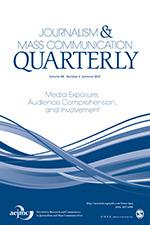
The present study seeks to systematically describe how humanitarian aid organizations use visuals in their natural disaster-related social media messages and to analyze their effects on social media engagement. Using Rodriguez and Dimitrova’s (2011) four levels of visual framing, we performed a content analysis of 810 tweets from 38 aid organizations. The results showed that, overall, the organizations’ visuals had an emphasis on victims and on disaster relief efforts. The most effective types of visual framing, however, were not those the aid organizations most commonly used. We discuss the theoretical and practical implications.
Engaging Consumers with Corporate Social Responsibility Campaigns: The Roles of Interactivity, Psychological Empowerment, and Identification
Two experiments demonstrate the value of participatory over non-participatory CSR.
Author/Lead: Sun Young LeeNon-ARHU Contributor(s): Yeuseung Kim & Young Kim

This study explores the mechanisms through which corporate social responsibility (CSR) campaigns that solicit consumer participation benefit companies more than non-participatory campaigns. In Study 1, we demonstrated that consumers who were asked to actively participate in CSR campaigns were more likely to consider the company’s motives public-serving rather than self-serving, evaluated the company more favorably, and had higher purchase intentions regarding the company’s products, mediated by perceived consumer–company interactivity. In Study 2, we showed that psychological empowerment and consumer–company identification can explain the positive effects of perceived interactivity. Unlike non-participatory campaigns, participatory campaigns empower consumers and strengthen consumer–company identification through perceived consumer–company interactivity, which, in turn, positively affects perceived CSR motives, attitudes toward the company, and purchase intentions. Our studies highlight the value of consumer engagement with participatory CSR campaigns and explain why it works. We conclude by discussing the theoretical and practical implications of our findings.
Self-Imagery and Advertising Effectiveness: The Role of Sense of Presence
Study assesses whether self-imagery is more effective than other-imagery.
Author/Lead: Sun Young LeeNon-ARHU Contributor(s): Wonseok (Eric) Jang (lead) & Akira Asada
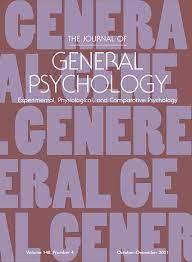
The purpose of this study was to assess whether self-imagery is more effective than other-imagery, and if so, to investigate the mechanism of how self-imagery generates more increased positive responses from consumers. Furthermore, we explored the boundary conditions associated with reduced positive effects of self-imagery on consumer responses. The results of Experiment 1 suggest that self-imagery was more effective than other-imagery in generating a favorable attitude toward an advertisement and purchase intention, since it enhanced a sense of presence, and consequently, imagery engagement. However, based on the results of Experiment 2, when an advertisement evoked a sense of high-risk, self-imagery generated a less favorable attitude toward the advertisement than other-imagery due to the emotion of fear evoked by the advertisement.
Read More about Self-Imagery and Advertising Effectiveness: The Role of Sense of Presence
The co-creation of social value: what matters for public participation in corporate social responsibility campaigns
This study explores the impact of organization–public relationships (OPRs) and issue-related situational factors on publics’ intention to participate in CSR campaigns, based on relationship management theory and the situational theory of problem-solving.
Author/Lead: Sun Young LeeNon-ARHU Contributor(s): Young Kim & Yeuseung Kim
This study explores the impact of organization–public relationships (OPRs) and issue-related situational factors on publics’ intention to participate in CSR campaigns, based on relationship management theory and the situational theory of problem-solving (STOPS). We surveyed 698 respondents living in the United States about two CSR campaigns, one focused on girls’ empowerment and one on deforestation. The results showed that situational motivation and OPRs were strongly and directly related to publics’ participation intention for both CSR campaigns. Only two situational perceptions – constraint recognition and involvement recognition – were indirectly related to publics’ participation. We discuss the theoretical implications of these findings.
Visual CSR messages and the effects of emotional valence and arousal on perceived CSR motives, attitude, and behavioral intention.
This study examined how the emotional valence and arousal generated from contextual images in CSR messages affected the perceived CSR motives of companies, attitude toward the companies, purchase intention, and CSR participation intention.
Author/Lead: Sun Young LeeNon-ARHU Contributor(s): Chung, Sungwon
Companies have frequently used visuals (e.g., still images and videos) as part of their corporate social responsibility (CSR) communication strategies, and those visuals often contain emotional content. As yet, however, scholars and practitioners have little understanding of how emotional design influences the effectiveness of CSR communication. This study examined how the emotional valence and arousal generated from contextual images in CSR messages affected the perceived CSR motives of companies, attitude toward the companies, purchase intention, and CSR participation intention. The results of a 2 (valence: positive vs. negative) × 2 (arousal: calm vs. arousing) experiment showed that arousing negative images elicited the highest level of attributing public-serving CSR motives to companies, the most favorable attitude toward the companies, and the strongest purchase intention, and CSR participation intention. We discuss the theoretical and practical implications.
What Makes CSR Communication Lead to CSR Participation? Testing the Mediating Effects of CSR Associations, CSR Credibility, and Organization–Public Relationships
This study examines consumers’ uses of corporate social responsibility (CSR) communication channels, and the relationship of such uses to consumers’ CSR awareness.
Author/Lead: Sun Young LeeNon-ARHU Contributor(s): Zhang, Weiwu; Abitbol, Alan
This study examines consumers’ uses of corporate social responsibility (CSR) communication channels, the relationship of such uses to consumers’ CSR awareness, and the mechanisms through which consumers’ CSR awareness can lead to their intention to participate in CSR activities. Specifically, we explored the mediation effects of consumers’ CSR associations with a company, consumers’ assessment of the company’s CSR credibility, and consumers’ perceptions of their relationship with the company, applying the conceptual frameworks of the uses and gratification theory, source credibility theory, and organization–public relationship (OPR) scholarship. We conducted an online survey of a company’s customers (N = 394), and the results showed that their level of awareness of the company’s CSR activities was positively related to the degree of use of all communication channels through which they received CSR messages, except CSR reports. The degree of the customers’ awareness of the company’s CSR programs, however, did not always correspond to the customers’ intention to participate in the programs: a crucial condition mediating between the customers’ knowledge of CSR programs and their intention to participate in the programs was their associating the company with CSR. The CSR associations influenced CSR credibility and perceived OPR quality, which, in turn, led to CSR participation intention. We discuss the theoretical and practical implications of these findings.
Cognitive processing of corporate social responsibility campaign messages: the effects of emotional visuals on memory
This study explored the effects of visual strategies on consumers’ memory of corporate social responsibility (CSR) campaign messages.
Author/Lead: Sun Young LeeNon-ARHU Contributor(s): Chung, Sungwon
This study explored the effects of visual strategies on consumers’ memory of corporate social responsibility (CSR) campaign messages. Using the limited capacity model of motivated mediated message processing (LC4MP), we examined how emotional CSR messages are cognitively processed—specifically, how emotional visuals in CSR messages affect two subprocesses of information processing: encoding and storage. We conducted a 2 (valence: positive vs. negative) × 2 (arousal: moderately arousing vs. highly arousing) within-subjects experiment across four different CSR issues. The results showed that recognition accuracy and sensitivity (d′) of company logos were best for moderately arousing negative images, whereas for recognition accuracy and sensitivity (d′) of company names, there were no significant differences across the emotional conditions. For cued recall of companies associated with CSR issues, the pattern was different—highly arousing negative images with aversive cues were the most effective. We discuss the theoretical and practical implications of these findings.


